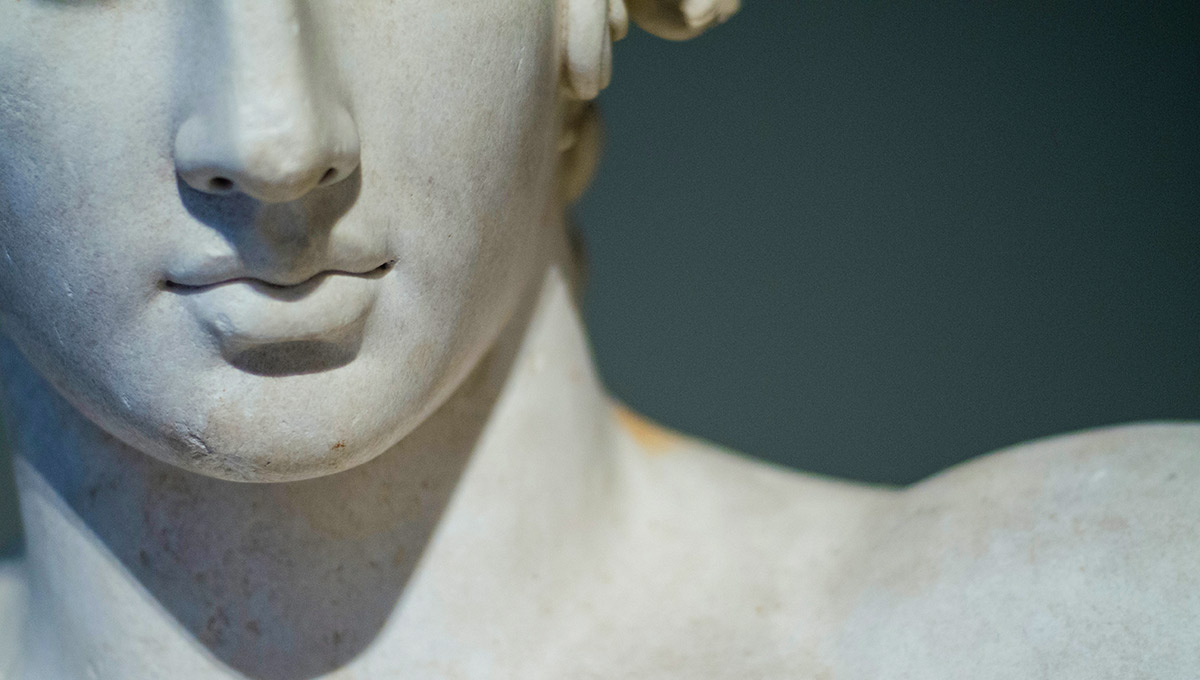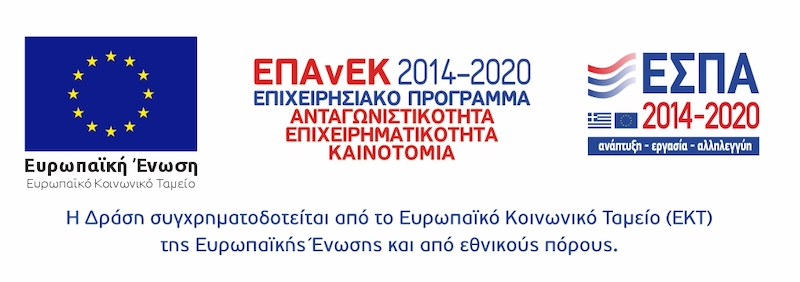
Museums & Libraries
GUIDE TO KEFALONIA
It is an old Byzantine monastery which was re-founded in 1579 by the three nuns Magdalene, Benedict and Leontia. In 1639, princess Roxani Tzigara, after being saved from a shipwreck, arrived at the Monastery where she stayed to be a monk. There she dedicated her large fortune, as well as the right foot of Apostle Andreas.The toponyme “Milapidia” comes from a unique variety of tree that grows in the area and is a cross between apple tree and pear tree. The monastery celebrates the name of St Andreas on the 30th of November every year. Also, on Easter Friday, the relics of Apostle Andreas are taken up to the chapel of St. Nicholas, with a litany. The Monastery also operates the Ecclesiastical Museum, which was founded in 1988 and was initially housed in the pre-earthquake church of the Monastery, which was saved from the devastating earthquakes of 1953. Later on, due to limited space, many icons, artifacts and relics, were moved to a new wooden building, exhibiting four centuries of Ecclesdiastical tradition and history.
The museum is open daily, except Sundays and bank holidays, from 8am until 14pm, with an admission fee of €3 per adult (€2 for groups) and children and students are admitted for free (student pass to be shown).
The Korgialenion Historic and Laographic Museum of Argostoli runs through the entire history of Kefalonia, from the time of the Venetian conquest (around 1500 AD) to the destruction of the island's civilization by the earthquakes of 1953, from narrating the daily life of people, in which historical developments intervene and exert a dynamic influence (successive foreign conquests, Union with Greece, wars, earthquakes, etc.). The aim of the Museum is not only to preserve the historical memory of a permanently lost material world, but to highlight the living and evolving cultural specificity of the place, which has as its starting point its rich cultural heritage, in combination with the promotion of scientific historical research, domestic economy, family and social life, folk art, recreation, etc.), but also the ecclesiastical art and religious life of the Kefalonians. Finally, he refers to the pre-earthquake architecture and urban planning, the disasters of the earthquake of 1953 and the reconstruction, while it pays tribute to eminent personalities, Kefalonians and non-Kefalonians, who marked the local history with their presence. Two of its exhibitions are hosted on the ground floor of the New Wing of the building. Together with the Korgialenios Library and the co-located archives of the GAK-Archives of the Prefecture of Kefalonia, which are hosted in the same building, they constitute an important pole of scientific and intellectual activity with international scope. The permanent exhibition of the Museum is divided into thematic sections (urban department, rural department, ecclesiastical art and Argostoli City Plan) in an effort to highlight the local cultural definition. The concept of the permanent exhibition is for the visitors to feel that they are entering not an exhibition space, but a warm, experiential environment - the transition between the different sections is done in such a way that the sense of unity, of sequencing between the compositional parts of this lost world, is constantly present. The two exhibitions that are hosted separately (Collection of Byzantine Icons of Sp. Harokopou and Collection of Frangiskos and Stefanos Vallianos) have been laid out autonomously, (especially the second) to maintain the sense of involvement. The museum is open daily, from 8.30am to 15pm, contact number +302671028835
The newest archaeological exhibition is the one of Sami, founded in 2021. The purpose to create this exchibition was to showcase the artifactsthat have been uncovered by excavations, through the years, in the areas of Sami and Fiscardo – the ancient city of Panormos. These objects are exhibited in 4 chambers: 1. The inhabitation of Sami. Sami was continuously inhabited from the early Bronze Age until the early Byzantine years. Tools used for dwelling construction, architectural elements and inscriptions, shed a bright light over the private and public life of the city. 2. The importance of water. Water is presented as a source of life, an element of purification and a means to transport goods. Exhibits related to the Roman baths and amphorae retrieved from the sea, show the importance of Sami and Panormos ports. 3. Every day life. Artifacts related to worshiped deities and religious beliefs, athletic events, war, productive activities, industrial facilities, economy, interchanges with other areas, reveal the colors of the social activity in Sami and Panormos, while the ornate pieces of jewelry and the impressive glass vessels denote the prosperity in which the two cities grew. 4 Burial customs. Plain or memorial tombs, numerous artifacts and the burial customs at the structured cemeteries in both citiesreflectthe grief, the respect and the throe towards those travelling to the underworld, where their families made sure they still maintain some of their favorite objects. The representation of an arched monument at Panormos, denotes the monumental form of burial architecture during the Roman times.
The museum includes a multi-purspose auditorium, where visitors can have access to information through multimedia and interactive applications, as well as educational courses.
The inlays of Sami exhibited in the outside of the building, constitute evidence of the decoration patterns of villas and public buildings of the city.
The exhibition is open daily except Tuesday, from 8.30am to 15.30pm with an admission fee of €4 per person. Contact number +302674022458
The museum's collection includes findings from all over the island, dating from the Paleolithic to the Late Roman period. Among them, there are siliceous tools of the Paleolithic period, found in abundance in Sami, Fiscardo and Skala, various objects of the Neolithic times, found from time to time on the island - most of it comes from the cave of "Drakaina" in Poros. The collection also includes representative clay pots of the Middle Helladic period, mainly from the box-shaped tombs of Kokkolata, but also valuable miniature art and pottery from the lacustrine and the two vaulted tombs in Kokkolata, belonging to the last Mycenaean period (Late Helladic III A2 - III C, 1390/70 - 1060/40 BC). The most important period for Kefalonia is the Mycenaean, of which the objects of the collection are numerous. The vast majority of them come from tombs. Part of the
collection is related to the Kefalonian tetrapolis of the 5th century BC, which consisted of four city-states, Pali, Krani, Pronnoi and Sami. On display are findings from the area of Paliki, among which stand out hydria of the 8th century BC and a marble head of a bearded Silenus and a plastic vase in the form of a slave's head, dating back to Roman times. Presented, also, objects from the rich Roman cemetery in Fiskardo, from the cemetery of Kokkolata and Metaxata, from the areas of Krani and Pronnoi, and from the cult cave of Diakata, from Sami and its wider region, about which we know more information on the occasion of the rescue excavations carried out there.
The Museum remains closed as the building was severely damaged by the earthquakes of 2014. In 2022, by decision of the Ministry of Culture and Sports, the process of its reconstruction began in order to reopen it in the future.
Sami is a historic port, the biggest and most important of Kefalonia. Dating back to the Homeric years, Sami holds a rich naval tradition. It has been port to numerous boats, ships and yachts up to nowadays, connecting Kefalonia to the mainland and defining the start of every journey for Kefalonians, as well as the sense of homecoming. The Nautical Museum has been created by Sotiris Marketos, the builder of twenty-four miniature vessels, from a 3.500 year history of shipbuilding, including not only Kefalonian vessels but also the replica of the legendary Titanic. A talented builder that is giving visitors a glimpse in the past and paying a tribute to the history of the port of Sami.
The museum is open from May to October, from 10am to 14pm, with an admission fee of €4 per adult, €2 per child (children below 6 years old are admitted for free).
The Public Central Library of Typaldos-Iakovatos Museum in Lixouri, known as Iakovateios Library, is housed in the Typaldos-Iakovatos family’s two-store mansion, which was built in 1866 and renovated in 1984,but was seriously hit by the earthquakes in 2014. It is a characteristic sample of neo-classical architecture of the mid-19th century, while the surrounding area, an inseparable part, contributes to the building’s projection. The ceilings of the interior are decorated with drawings worthy of admiration. The Ministry of Civilization declared it a work of art in 1968.
The mansion was built by the brothers Kostandinos (1795-1867), Nikolaos (1801-1884), Charalambos (1810-1885) and George (1814-1882), who were the sons of Aloisios Typaldos-Iakovatos and of Catherine Krasa. Aloisio’s family is part of the Typaldos family tree, which traces back in Kefalonia to 1408. The brothers Typaldos-Iakovatos were distinguished for their successes in the literary, scientific and political life of their time. Because of their thirst of learning, their diligence, bibliography and their collective disposition, a significant number of books, ancient items and religious icons have been collected, which, together with the furniture and family portraits, compose the foundation for the creation of a private family museum and one of the richest private libraries of the Ionian Islands.
The Typaldos-Iakovatos mansion was passed on to the sole descendant and heir of the family, Catherine Iakovatou-Toul, whose children, honoring their mother’s wish, donated the building along with all its contents to the Greek State under the number 24351/6-7-1963 deed of donation, on the condition that a Library/Museum be housed in it.
Her wish was granted and under the 28-8-1963 common decision of the Ministry of Education and Religion and the Ministry of Economics, a library was founded in Lixouri under the name “Public Central Library-Museum Typaldos-Iakovatos”, which is subject to the Ministry of Education and Religion and operates as a Legal Entity of Public Law.
The ground floor of the building houses Lixouri’s Public Central Library, which consists of approximately 30,000 volumes of books and magazines that have been published from the 16th century to the present, many of which are rare and difficult to find and cover a wide range of topics, both scientific and entertaining. The Library’s collection is constantly enriched with modern material. A Museum operates on the first floor where heirlooms of the Typaldos-Iakovatos family are displayed and archives with very interesting material of the same family are preserved.
During this period the building is not accessible because of the earthquakes in 2014.


